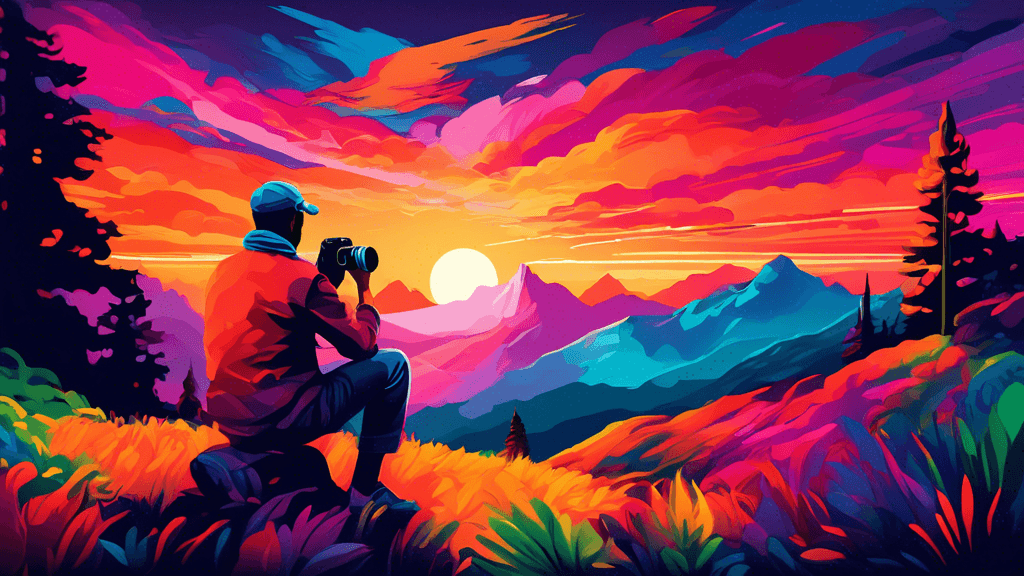
Nature’s Palette: Mastering Color in Landscape Photography
Share
The Art of Capturing Colors in Landscape Photography
Landscape photography is not just about capturing spaces; it's about conveying the profound beauty and varied moods of nature. As a landscape photographer, mastering the use of color is crucial because it can transform the mundane into the extraordinary. In this blog, we will explore how to enhance your landscape photos by understanding and utilizing colors effectively.
Understanding Color Theory
Before diving into specific techniques, it’s important to grasp the basics of color theory. Colors can evoke emotions and set the mood of a photograph. Warm colors such as red, yellow, and orange evoke feelings of warmth and comfort, while cool colors like blue and green convey calmness and serenity.
How Colors Interact
Colors opposite each other on the color wheel, known as complementary colors, can create a vibrant look if used in the right proportions. Analogous colors, which are next to each other on the wheel, offer a harmonious look and feel. Understanding these relationships can help you create visually compelling compositions.
Mastering the Golden and Blue Hours
The time of day greatly affects the color palette of your landscape. The golden hour—just after sunrise or before sunset—produces a warm, golden light that enhances textures and depth. During the blue hour, which is the twilight period just before sunrise or after sunset, you capture cooler tones that bring a moody, tranquil feel to your landscapes.
Real-life Example
During golden hour, the light is softer and the color temperature is warmer. This light paints the landscape in a golden hue that is perfect for highlighting the earth’s natural beauty and creating a sense of depth in your photos, according to John Doe, a renowned landscape photographer.
Utilizing Weather Conditions to Enhance Color
Weather plays a pivotal role in landscape photography. Overcast skies can reduce shadows and diffuse light evenly, which can help in saturating the colors of the scene. Conversely, after a rain, colors can appear more vibrant and saturated due to the wet surfaces.
Tip for Capturing After Rain
After a rainstorm, use a polarizing filter to cut through the glare and enhance the wet colors. The polarizer will also help in adding contrast to the clouds and making the sky pop.
Working with Seasonal Colors
Each season offers a unique palette to work with. Spring provides lush greens and vibrant flowers, summer brings harsher lights but richer blues, and fall offers a fiery array of reds, oranges, and yellows. Winter, with its snow and bare trees, offers a minimalist palette dominated by whites and greys.
Seasonal Strategy
To capture the essence of each season, focus on its characteristic colors. For example, aim to photograph the vibrant golds and reds during the peak of fall, or the serene snow-blanketed landscapes in winter, which reflect and amplify whatever light is available.
The Importance of Post-Processing
Post-processing is a powerful tool to enhance and draw out the colors captured in your raw photographs. Tweaking the white balance, saturation, and vibrance can help in maintaining the natural look of the scene while enhancing its visual impact.
Tools and Techniques
Utilize editing software like Adobe Lightroom or Photoshop to make selective adjustments to hue, saturation, and luminance. These tools allow you to fine-tune the colors for a more dynamic impact.
Conclusion: Why Mastering Color Matters
Understanding and manipulating color in landscape photography does more than just beautify a scene; it communicates mood, depth, and emotion. Developing a keen eye for color and learning how to use it effectively can set your work apart and tell more impactful stories through your imagery.
Your Next Steps in Color Mastery
Start by observing the play of light during different times of the day and season, understand the emotional impact of different colors, and experiment with combinations that will enhance your compositions. Let every landscape you capture be an exploration of nature’s vast palette.
Remember, every photo you take is a chance to paint with nature's own palette. Go out there and create your masterpiece!





